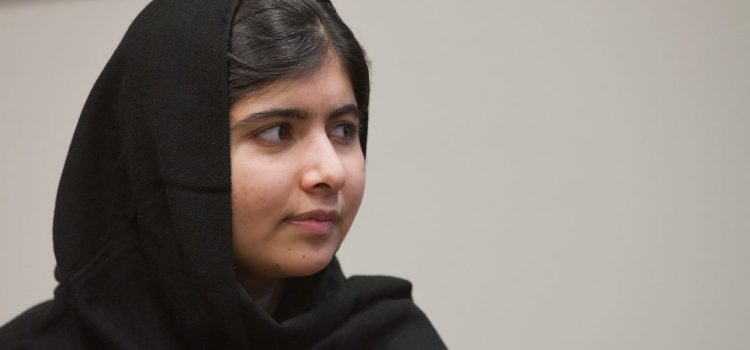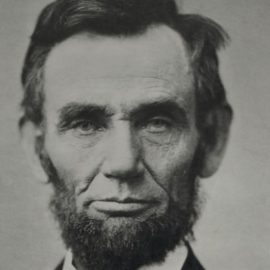

This article is an excerpt from the Shortform book guide to "I Am Malala" by Malala Yousafzai. Shortform has the world's best summaries and analyses of books you should be reading.
Like this article? Sign up for a free trial here.
Why did the Taliban shoot Malala Yousafzai? Why did they consider her such a threat?
Surrounded by the Taliban’s increasing violence and attacks on women and girls in Pakistan, Malala Yousafzai did what she believed was right. She continued going to school despite the Taliban’s ban, and—encouraged by her father—she spoke out in support of girls’ education.
Read more to learn why the Taliban shot Malala.
Image source: Simone D. McCourtie / World Bank
Why the Taliban Shot Malala
Why did the Taliban shoot Malala? We’ll look at Malala’s campaign for girls’ education in the face of serious risks, including the Taliban’s bombings and closures of schools, the evacuation of the Swat Valley due to fighting between the army and the Taliban, and the continued death threats against Malala and her father. Finally, we’ll discuss the shooting itself.
Malala Spoke Out in Support of Girls’ Education and Against the Taliban
Malala continued going to school despite the Taliban’s prohibition on girls’ education. She hid her book bag on the way there and back and didn’t wear her uniform to avoid detection by the Taliban.
The fighting continued in the Swat Valley in 2007 and 2008. Fazlullah started blowing up schools, usually after the night curfew when no one was in them. There were school bombings almost every day. One of them killed 10 members of Malala’s best friend’s family. By the end of 2008, the Taliban had destroyed over 400 schools.
Some of the Pashtun elders in Swat, including Ziauddin, banded together to challenge Fazlullah. They spoke out against the Taliban by giving interviews on radio programs like Voice of America and the BBC. Malala’s father encouraged her to speak up, and she began giving interviews as well.
She started when she was 11 by doing group interviews with her classmates, in which they spoke about girls dropping out of school because of the Taliban. But, when her classmates reached 13 and 14, the men in their families didn’t want them to give interviews anymore because they were afraid the Taliban would punish them for not observing purdah after puberty. Malala had the support of her father and believed it was important to speak the truth, so she continued. She believed God would protect her because she was doing what was right.
Ziauddin’s friend, a BBC radio correspondent, called him looking for a female teacher or student to write a weekly diary about life under the Taliban. Malala volunteered to do it. They had a computer, but there were frequent power cuts and little internet access, so the correspondent interviewed Malala over the phone and wrote up her thoughts. She used a pseudonym—Gul Makai—and couldn’t tell anyone she was writing the diary because it was too dangerous. The diary garnered international attention. Malala began to see the power of the written word.
At the end of 2008, the Taliban announced that all girls’ schools must shut down by January 15. On the day Malala’s school shut down, she and her classmates stayed late playing, and then she went home and cried. After that, she did as many TV and radio interviews as she could. She said that the Taliban could close the schools, but they couldn’t stop girls from learning. However, she feared it would be very hard to learn, much less get a job, without school.
After the Taliban banned girls’ education, Pakistanis spoke out in a way they hadn’t before. The Taliban agreed to lift the ban for girls up to 10 years old. Malala was 11, but she and others her age pretended they were younger so they could start going to school again.
Malala’s Family Fled the Swat Valley
Finally, the Pakistani Army launched a more intensive effort to drive the Taliban out of Swat. The government told people to evacuate. Malala’s family tried to stay, but the fighting left them constantly anxious. They left the Swat Valley along with almost two million Internally Displaced Persons (IDPs).
Malala and her family were away from their home for about three months. When they returned, they found buildings in ruins, piles of wreckage, and walls covered with bullet holes. The Taliban was no longer in charge, but Malala feared that they could return at any minute; she had nightmares about it.
Life began to regain a semblance of normalcy. But, just when people started to think the Taliban was really gone, there was a series of bombings, kidnappings, and murders. Ziauddin continued to speak out against the Taliban, and he received another death threat.
Malala’s Profile Continued to Rise
Meanwhile, Malala received many awards for speaking out for girls’ education, and she continued to give interviews to TV and print journalists. During one speech at a gala, she spoke publicly for the first time about defying the Taliban’s orders and going to school in secret.
Malala’s rising profile attracted attention, and she received a death threat from the Taliban. Although her parents were worried and encouraged her to pause her work, Malala wanted to keep speaking out. She reassured herself with the thought that the Taliban had never targeted a young girl. She was more worried about her father than herself.
Nonetheless, Malala started having nightmares about the Taliban shooting her or throwing acid in her face. At night after everyone was asleep she double-checked that every door and window in the house was locked and prayed that her family and all of Swat would be protected from the Taliban.
| Children in Conflict Zones Malala frequently mentions the fear she experienced as the result of the Taliban’s actions and the fighting between the army and the Taliban. Her reactions to this fear, such as nightmares and constant anxiety, are common among children living in conflict zones. Children in Syria, Ukraine, and Gaza, among other places, often live in a state of “toxic stress” that has long-term consequences for their psychological well-being. These children experience many types of violence, such as bombings, killings, and displacement from their homes. The mental health effects of living in conflict zones are most significant for children who are separated from their parents; Malala’s ability to continue her fight despite her fear may have been reinforced by the ongoing love and support of her family. |
Malala Was Shot by the Taliban
By the time Malala was 15, she had been speaking out against the Taliban, at increasingly greater personal risk, for four years. She and her family had been receiving threats from the Taliban for a year.
On October 9, 2012, the Taliban shot Malala. At the time, she and her friends were going to school in secret. There was no longer a sign over the door to the school, and the students arrived by bus, even though the school was only a short walk from their homes, because it wasn’t safe to walk.
Malala was riding the bus home from school with 19 other girls when Taliban soldiers pulled them over. A man asked for her by name and then shot her in the face point-blank. The bullet went through her left eye socket, exited her head, and lodged in her shoulder, narrowly missing her brain. The Taliban later claimed responsibility for shooting Malala. They said they had done it, not because of her fight for girls’ education, but because she supported Western, secular ideas.
(Shortform note: Almost all terrorist groups use assassination as a terrorism tactic, but terrorists have committed far more assassinations in Pakistan than in any other country where assassinations occur. According to the US government, while terrorist groups commit assassinations to eliminate enemies, they also do so to intimidate the population of a region, influence public opinion, or garner media attention, among other reasons.)
Malala was rushed to a series of hospitals, where doctors operated on her to remove the bullet and relieve life-threatening swelling in her brain.

———End of Preview———
Like what you just read? Read the rest of the world's best book summary and analysis of Malala Yousafzai's "I Am Malala" at Shortform.
Here's what you'll find in our full I Am Malala summary:
- Malala Yousafzai's autobiography about growing up in a society where women lack rights
- A look at Yousafzai's origins in poverty to her campaign for girls’ education
- How she survived getting shot at point-blank by the Taliban






